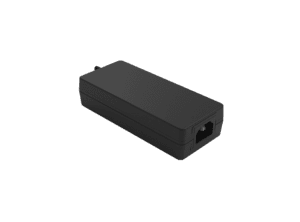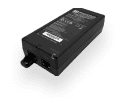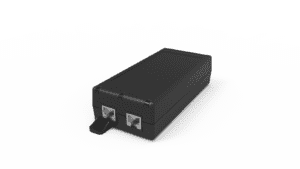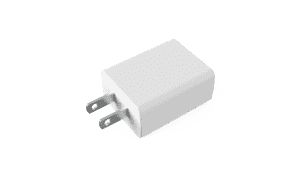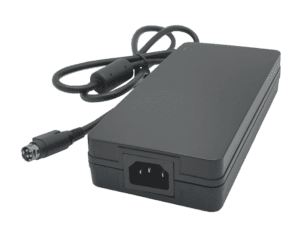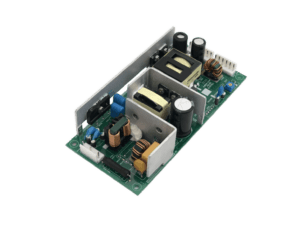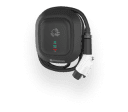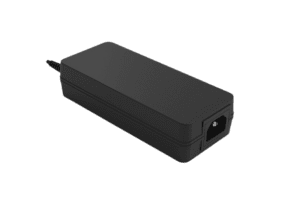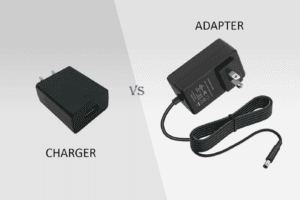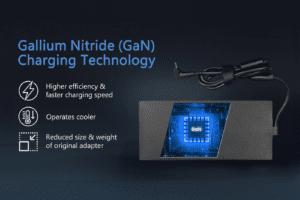BLOG
Best Guide to Robotic Docking Station Manufacturers: How to Source Custom Charging Docks for Autonomous Robots
QUICK LINKS

As autonomous robots take on critical roles in logistics, security, healthcare, and agriculture, their ability to autonomously recharge becomes mission-critical. Whether a robot delivers packages on a college campus, patrols a parking structure, or cleans a hospital corridor, it must return to a custom docking station to recharge, upload data, and prepare for the next cycle.
Yet, sourcing the right robotic docking station manufacturer is not just about finding a supplier—it’s about choosing a strategic engineering partner. Off-the-shelf options may not meet your voltage requirements, form factors, environmental needs, or safety standards. That’s where custom robotic docks come in.
In this guide, we explore how OEMs, systems integrators, and robotics developers can source, spec, and scale custom robotic charging stations with the right manufacturing partners—whether for small indoor fleets or citywide outdoor deployments.
Why Custom Robotic Docking Stations Are Essential for Autonomous Robots
Every robot has unique dimensions, power needs, and operational environments. A custom docking station ensures perfect alignment, safe power delivery, and environmental durability, all while supporting hands-free operation.
Top Features
- Mechanical alignment guides tailored to robot chassis
- Battery management system (BMS) integration for intelligent charging
- Waterproof and dustproof enclosures for outdoor use (IP67/IP68)
- Communication protocols (CANBus, RS-485, Ethernet, or wireless)
Top Benefits
- Prevents misalignment, charging errors, and wear on contacts
- Extends battery life with intelligent charge cycles
- Supports unattended charging in public or hazardous areas
- Enables faster deployment and easier maintenance across locations
Best Practices
- Involve your docking manufacturer early in robot prototyping
- Share mechanical CAD files and electrical schematics for fitment
- Request thermal and IP ratings to match robot use cases
- Define safety and compliance requirements upfront
A robotic system is only as good as its infrastructure—and charging is the most critical part.
What to Look for in a Robotic Docking Station Manufacturer
Not all manufacturers can deliver precision-engineered, scalable, and safety-compliant robotic docks. The ideal partner is experienced in robotics, power electronics, and IP-rated system design.
Top Features
- Proven expertise in OEM robot integrations
- In-house electrical and mechanical design services
- UL, CE, and IEC compliance support
- Scalable manufacturing and post-deployment support
Top Benefits
- Reduces risk of delays from poor fit or integration issues
- Speeds up product certifications and market entry
- Offers flexibility for future robot model changes or expansions
- Ensures smooth communication and iterative design improvements
Best Practices
- Ask for references or case studies from similar deployments
- Request design samples, not just catalogs
- Verify the company’s ability to manage long-term volume production
- Review IP, thermal, and safety testing procedures during vetting
The right docking manufacturer becomes your partner—not just a vendor.
Indoor vs. Outdoor Dock Design Considerations
Robot charging docks vary significantly depending on whether they opeate in controlled indoor environments or harsh outdoor deployments.
Top Features
- Indoor: Sleek, compact housings; magnetic or pin-based alignment
- Outdoor: IP67/IP68 enclosures, thermal protection, UV-resistant housings
- Embedded navigation beacons for precise robot docking
- Passive or active thermal management systems
Top Benefits
- Indoor: Fast deployment, user-friendly maintenance, aesthetic designs
- Outdoor: Year-round uptime, flood resistance, protection from dust, snow, or debris
- Environment-specific features reduce wear and charging downtime
- Tailored solutions improve robot-to-dock success rates
Best Practices
- Match IP rating and materials to expected moisture, sunlight, and dust levels
- For outdoor docks, add drain paths, sealed connectors, and corrosion-proof metals
- For indoor docks, consider cable management, service access, and human safety signage
- Test docking reliability under real environmental stressors (cold, vibration, EMI)
Custom doesn’t just mean mechanical—it means environmental compatibility at every level.
CLIENT'S QUOTE
"Phihong’s PoE solutions have made a huge difference for us! Our network runs more efficiently, and we’ve seen real cost savings. We couldn’t be happier!"
Power and Communication Integration in Docking Stations
Modern robots require more than power—they need smart communication with the charging station to validate charging cycles, log metrics, and receive firmware updates.
Top Features
- AC-DC or DC-DC modules with BMS handshaking capabilities
- Charge status indicators (LEDs, app dashboards, QR-based technician access)
- Real-time data exchange over CANBus, RS-485, or cloud APIs
- Onboard diagnostics for temperature, voltage, and current tracking
Top Benefits
- Enables smart charge control based on battery health or robot schedule
- Reduces downtime from failed or incomplete charges
- Supports predictive maintenance and performance tracking
- Increases energy efficiency through dynamic power control
Best Practices
- Choose power modules rated for your robot’s chemistry (Li-ion, LFP, NiMH)
- Test firmware behavior under poor connection or robot misalignment scenarios
- Integrate secure communication protocols for over-the-air updates
- Consider edge compute or local data storage for remote deployments
A dumb dock is a liability. A smart dock is an asset that keeps your fleet moving safely and efficiently.
Compliance, Safety, and Certification for Robotic Charging Systems
Autonomous robots operate in public and commercial spaces—charging systems must meet global safety and electrical standards to avoid risk and liability.
Top Features
- UL 2593, UL 2231, or IEC 61851 safety-compliant charging logic
- Ground fault, thermal, and overcurrent protection
- Fire-retardant materials (UL 94 V-0 or better)
- Lock-out/tag-out features for maintenance safety
Top Benefits
- Ensures safe operation in hospitals, warehouses, and outdoor areas
- Minimizes liability from fire, shock, or malfunction
- Speeds up procurement approvals and deployment timelines
- Builds trust with stakeholders, property managers, and end users
Best Practices
- Involve your manufacturer in safety certification process from day one
- Document charging current, voltage, safety shutoffs, and enclosure ratings
- Choose components with third-party safety listings to accelerate compliance
- Perform functional testing under worst-case environmental conditions
Without safety and certification, your robot dock can’t scale—no matter how innovative it is.
How Phihong USA Supports Custom Docking Station Manufacturing
Phihong USA is a trusted power solutions partner for robotics OEMs, integrators, and manufacturers building autonomous charging docks. Our engineering teams specialize in delivering ruggedized, smart, and scalable power systems—including custom AC-DC modules, sealed enclosures, and BMS-compatible chargers.
We support clients through every phase:
- Mechanical and electrical design of custom docks
- Integration with autonomous navigation and battery systems
- Wide-temperature, IP-rated components for indoor and outdoor use
- Compliance support for UL, CE, and IEC certifications
Whether you’re launching a sidewalk delivery bot or an airport security patrol robot, Phihong helps you deliver field-ready charging systems that last. Contact us today to explore your custom robotic docking needs.

Contact Our Team Today!
Our dedicated sales team and international partners are prepared to support you with your latest projects and initiatives globally.
Explore More with Phihong USA
As we conclude our exploration of PoE technology, it’s evident how these innovations are streamlining power and data integration across various industries. Phihong USA stands at the forefront of this technological advancement, offering a diverse range of power solutions designed to meet the evolving needs of modern industries.
Phihong USA’s extensive product lineup includes:
- Power over Ethernet (PoE) Solutions: Delivering reliable power and data transmission over a single cable, ideal for simplifying network installations and reducing costs.
- AC/DC Adapters and Power Supplies: From compact adapters to industrial-grade power supplies, Phihong provides solutions that ensure efficiency and reliability in various applications.
- Battery Chargers: Customizable chargers for lithium-ion and lead-acid batteries, supporting a wide range of power requirements for mobility and industrial applications.
- Medical Power Supplies: Specialized power solutions designed to meet the stringent requirements of the healthcare industry, ensuring safety and reliability.
Phihong USA is committed to innovation and excellence, continually developing products that meet the highest standards of performance and reliability. Their global reach and dedication to customer support make them a trusted partner in powering the future.
Here are some useful links to explore Phihong USA’s offerings further and bring in new potential clients:
Visit Phihong USA to discover how their advanced power solutions can support your business needs. Whether you’re looking to upgrade your network, or find reliable power supplies, Phihong USA has you covered.
By choosing Phihong USA, you’re partnering with a leader in power technology, ensuring your operations run smoothly and efficiently with top-tier power solutions. Contact Us today!
FAQ
Why do I need a custom robotic docking station instead of an off-the-shelf charger?
Off-the-shelf charging systems often don’t match your robot’s dimensions, battery specs, or communication protocols. A custom robotic docking station ensures alignment, safe power delivery, environmental compatibility, and smart BMS integration. For robots that operate autonomously, a custom dock is critical to avoid charging failures, misalignments, or regulatory compliance issues. It also improves uptime, simplifies maintenance, and enhances safety in public or industrial environments. Simply put—custom docks are the only way to guarantee seamless, scalable, and safe robot operations.
How do I choose the right manufacturer for custom robot charging docks?
Look for manufacturers with experience in robotics, power electronics, and industrial design. They should offer electrical engineering, thermal management expertise, and UL/IEC compliance knowledge. Ask about previous projects in robotics, outdoor enclosures, and smart charging. Review their ability to scale production and support firmware/communication integration. A great docking manufacturer becomes a design partner, not just a hardware vendor. Don’t settle for a catalog—ask for customization, documentation, and co-development support.
What are common power requirements for robotic charging docks?
Most autonomous robots operate with DC voltage systems ranging from 24V to 72V, depending on motor size and battery chemistry. Charging currents can range from 2A to 25A or more. A proper docking station needs to match these parameters while offering voltage regulation, current limiting, and safety shutdown. AC-DC modules must also support wide input ranges (90–264V) and meet EMI, thermal, and surge protection standards. For intelligent robots, communication with the BMS is also essential to prevent overcharging or imbalance.
Can robotic charging stations be used outdoors?
Yes—but only if they are designed for it. Outdoor robotic charging docks must meet IP67 or IP68 ratings to protect against water, dust, and environmental damage. They should be built with UV-resistant materials, sealed connectors, and thermal protections to survive heat, cold, or storms. Phihong provides power modules and enclosures specifically designed for outdoor robotics—including autonomous delivery robots, agricultural bots, and mobile service robots that operate in sidewalks, warehouses, and field deployments.
How does Phihong USA support OEMs building robotic docks?
Phihong USA provides custom power system engineering for robot charging stations. We offer:
- Wide-temp, IP67-rated power modules
- Smart DC charging systems with BMS support
- Connector and housing customization
UL, CE, and IEC compliance assistance
We also support cloud integration, firmware updates, and field diagnostics. Whether you’re building a prototype dock or a production fleet, Phihong delivers reliable, scalable charging solutions built to match your robot’s performance.

